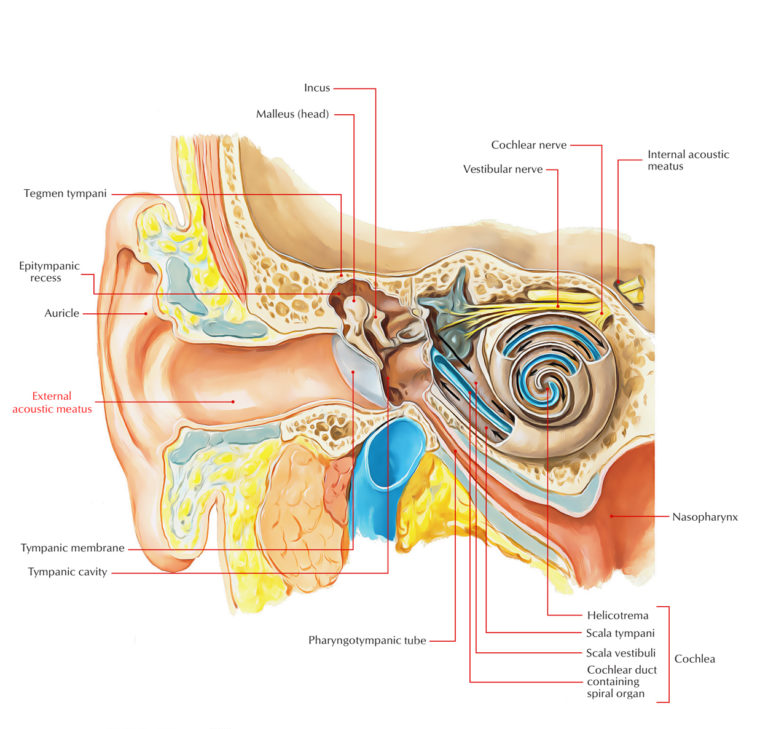
Symptoms include painless otorrhea with conductive hearing.


Water entering the middle ear through a tympanic membrane perforation may exacerbate chronic otitis media Otitis Media (Chronic Suppurative) Chronic suppurative otitis media is a persistent, chronically draining (> 6 weeks), suppurative perforation of the tympanic membrane. Irrigation is contraindicated in patients with a known tympanic membrane perforation or with a suspected infection.

Irrigation may also be combined with cerumenolytic agents, such as liquid docusate sodium. Irrigation is often done in the emergency department or primary care setting and should be done carefully to avoid complications. These methods, particularly when done by an experienced practitioner, can be quicker and safer than irrigation.
EXTERNAL ACOUSTIC MEATUS SKIN
The external acoustic meatus begins where the rolled up part of the annular cartilage narrows and ends, the meatus has cartilaginous and osseous parts it is lined with skin the study provided that acoustic meatus about 5.667☐.0816 cm of length in cattle and 6.500± 0.126 cm in buffalo, the aim of present work is to report more detailed information about the auricle and meatus in both animal for value importment can easily examined by the speculum the shortness of the meatus should be courses of the risk of injuring of the tympanic membrane and to be able to pass the otoscope tube through the external meatus and to recognize the eardrum when it is seen, to know the surgical anatomy of auricle and acoustic meatus and to know the relationship of vessels and nerve that must be avoid during surgery and to be able to recognize all parts of the temporal bone on radiographs.Cerumen can be removed by rolling it out of the ear canal with a blunt curet or loop or a small, blunt right angle hook, or by removing it with a suction tip (eg, Baron, size 5 French).

The present work shows that the frontoauricular muscles are distinguish into two parts in buffalo and cattle on the other hand the interscutularis muscle thin fibers and attached with scutuloauricularis prefunds muscle in buffalo, also the parotidauriculares narrower and thicker in cattle, but a ribbon -like muscle thin and wide in buffalo. The result of this study shows that intrinsic auricular muscles is more developed in buffalo, while the greater parts of the extrinsic auricular muscles are developed in both animals. The present work was design to study the anatomical features and radiographic appearance of auricle and external acoustic meatus of cattle and buffalo, collected from (12) sample of heads were used in this study, there were equally divided into three groups: first group to study the shape, position and relation of cartilage, muscles and ligament of auricle in both animals, second group to study the measurements of external acoustic meatus, and the third group study morphological and radiographical of external acoustic meatus in both animal, the study revealed that the auricle is a flapy flashy appendage attached to the side of the skull by muscles and ligaments, the auricle is funnel shape, distally is wide open, but more proximally, it is rolled up to form a tube that bend medially to be connected to the external acoustic meatus, the auricle in both animals is composed of three cartilage: the part auricular, scutiform and annular cartilage also auricular muscle and ligament which support the external ear.


 0 kommentar(er)
0 kommentar(er)
